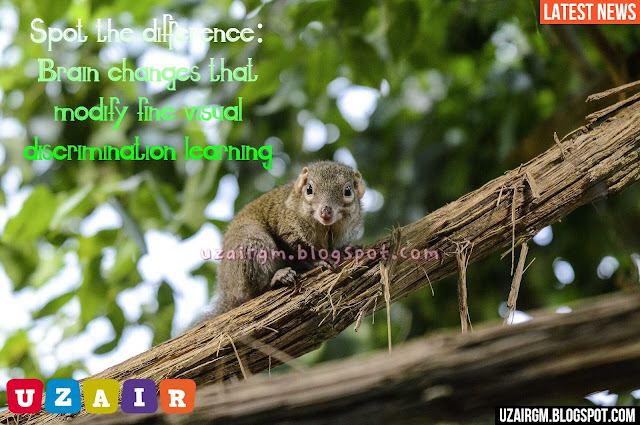 |
| spot-the-difference-a-brain-changes-that-modify-fine-visual-discrimination-learning, |
Our beholding of the planet is usually thought of as comparatively stable. However, like all of our psychological feature functions, visual process is formed by our experiences. throughout each development and adulthood, learning will alter visual perception. For example, improved visual discrimination of comparable patterns may be a learned ability crucial for reading. in a very new analysis study revealed in Current Biology, scientists have currently discovered the neuronic changes that occur during learning to boost discrimination of closely connected visual images.
This study, led by initial author Dr. Joseph Schumacher and superior author Dr. David Fitzpatrick at the physicist Florida Institute for Neuroscience, establishes a transformative approach to learning sensory activity learning within the brain. Researchers imaged the activity of huge numbers of single neurons over days to trace the changes that occur whereas a visible discrimination task is learned, playacting these experiments in a very novel animal model, the eutherian.
The tree shrew may be a little mammal with visual properties adore the human, together with a high degree of sight and an analogous orderly spacing of visually responsive neurons within the brain. because the researchers show, these animals can even learn advanced activity tasks, creating them ideal for understanding however expertise shapes visual perception. during this study, tree shrews were trained to discriminate between extremely similar visual images: identical black lines that differed solely by alittle amendment in orientation (22.5 degrees). within the task, the presentation of the lines at one orientation was rewarded with a drop of juice. Over days, tree shrews learned to discriminate between the 2 similar visual images, licking only in response to lines in primed orientation and restraining licking to lines in non-primed orientation.
The scientists combined this activity task with measurements of neural activity in V1, a section of the brain essential for visual processing. The neurons during this area are activated by specific options of visual input, reminiscent of the orientation of light-dark edges. Individual neurons show 'preference' for specific edge orientations, responding with the very best activity to those orientations and with more and more lower activity or no activity to edges oriented away from the well-liked orientation. during this way, a visible scene that has edges with completely different orientations activates specific subsets of neurons to generate a neural activity pattern that encodes the knowledge required for visual perception.
Schumacher and colleagues found that visual discrimination learning within the eutherian was amid improvement of the distinction in the patterns of neural activity induced by the 2 visual images. This was primarily because of a rise in the quantity of neural activity in response to the presentation of the rewarded stimulation orientation relative to the non-rewarded orientation. however this wasn't simply a general increase in neuronic responses to the rewarded stimulus. once the scientists examined the changes a lot of closely, they found that this was mediate by changes within the activity of a remarkably specific set of neurons: those whose orientation preference was optimum for characteristic the orientation of the rewarded stimulation from the non-rewarded stimulus.
to completely perceive the result of learning on visual perception, the authors next investigated whether or not the changes in neuronic activity that improved visual discrimination persisted outside of the learned task context. Interestingly, they found that the neuronal changes not solely persisted however were amid changes in the trained tree shrew' talents to perform different discriminations. This enclosed each enhancements for a few stimulus orientations and impairments for differents—behavioral changes that were precisely what would be expected given the changes within the responses of this specific set of neurons. "This work demonstrates specific experience-induced changes in neural activity that affect the perception of visual stimuli,enhancing discriminations relevant to task performance at the expense of other connected discriminations," explains initial author Joe Schumacher. currently the research laboratory has set its sights on combining this approach with new technologies to unlock the sequence and changes that occur in multiple varieties of neurons so as to mediate sensory activity learning. By searching these queries within the sensory system of the tree shrew, scientists in the Fitzpatrick research laboratory are discovering elementary new insights concerning sensory activity learning that would impact our understanding of a broad vary of learning disorders.

Post a Comment